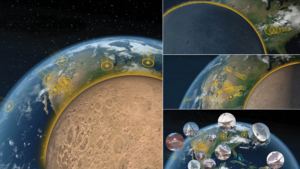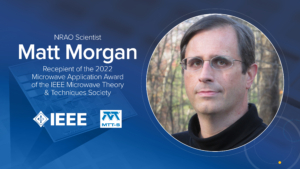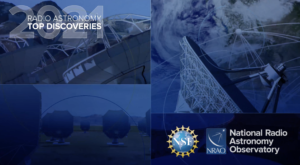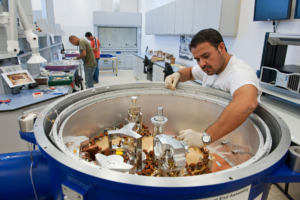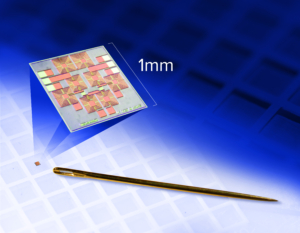The Planetary Science Decadal Survey indicated that new ground-based radar systems will be vital research tools for planetary defense and studying planets, moons, asteroids, and other Solar System objects. The National Radio Astronomy Observatory and the Green Bank Observatory are developing new capabilities for the Green Bank Telescope and the Very Long Baseline Array that will meet those needs.
NRAO Researcher Receives Prestigious Engineering Award
An NRAO researcher is receiving an engineering award for an innovative development that is improving radio telescope performance and also is benefitting numerous other fields.
2021 Science Highlights: Looking Back on a Turbulent Year in Radio Astronomy
The formation of massive stars and planets. The deaths of stars and galaxies. The extreme and violent behaviors of black hole jets and quasars. An up-close and personal radar view of the Moon. These mysteries and more were unraveled in 2021 by radio astronomers leveraging the scientific and technological power of National Radio Astronomy Observatory (NRAO) facilities.
The Baseline #10 – How To Kick A Pulsar Out Of The Galaxy
Pulsars are neutron stars. They are formed when an old star explodes as a supernova, so you would expect to find them in the center of its supernova remnant. But not always. Astronomers have learned that some pulsars are ejected from its remnant. The Very Large Array has discovered one pulsar that is quite a kick.
Join our host Summer Ash of the National Radio Astronomy Observatory as she talks about how you can get a kick out of pulsars.
ALMA’s Most Scientifically Productive Receiver Will Soon See Further than Ever Before
The National Science Foundation (NSF) and the board of the Atacama Large Millimeter/submillimeter Array (ALMA) have approved a multi-million dollar upgrade project for the Observatory’s 1.3mm (Band 6) receivers through the North American ALMA Development Program. The receivers—originally built, and to be upgraded, by the Central Development Laboratory (CDL) at the National Radio Astronomy Observatory (NRAO)—are the most scientifically productive in ALMA’s lineup.
NSF Partnerships for Innovation Funding to Make NRAO Tech Accessible to New Wireless Markets and High-Frequency Applications
The National Science Foundation (NSF) has awarded the National Radio Astronomy Observatory’s Central Development Laboratory (CDL) $250,000 in Partnerships for Innovation (PFI) funding to support the proof-of-concept development of high-performance reflectionless radio frequency filters at 40 GHz and above for high-frequency applications, including wireless and defense.






